
Have you ever calculated how long you have to sit in a day? Going to work, eating, riding in the car, chasing dramas at home, swiping mobile phones… For some people, sitting time is much longer than sleeping.
The World Health Organization lists “sedentary” as one of the top ten leading causes of death. Some people hope that exercise can offset the damage caused by sedentary sitting.
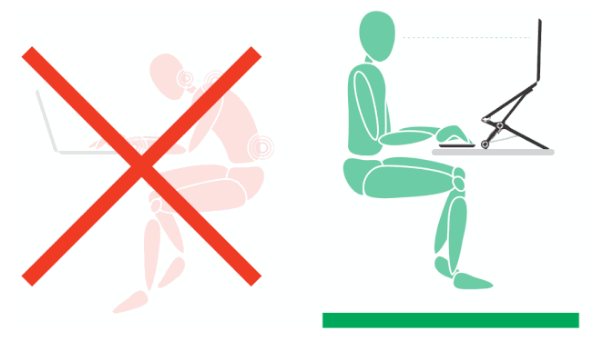
Recently, a foreign study disillusioned the “sedentary”. Studies have shown that even with regular exercise, sitting for a long time still increases the risk of heart failure.
Now teach you 4 simple actions against sedentary.
Exercise cannot offset the damage of “sedentary”
As we all know, exercise is good for health. But why does heart failure still occur when someone exercises regularly?
Recently, an American study found that even if older women take regular physical exercises, they still have an increased risk of heart failure if they sit and lie for a long time awake.
This study included about 81,000 postmenopausal women aged 50 to 79, with an average age of 63 years. Participants self-reported that they were sitting, lying down, and physical activity during their waking hours. They had no heart failure during the study, and they could walk at least one block.
Research result
Studies have shown that during an average follow-up of 9 years, 1402 women were hospitalized for heart failure.
Compared with women who sit and lie for less than 6.5 hours a day while awake, those who sit and lie for 6.6 to 9.5 hours increase the risk of heart failure hospitalization by 15%, and those who sit and lie for more than 9.5 hours increase the risk of heart failure by 42% Hospitalization risk.
Compared with women who spend less than 4.5 hours sedentary when awake a day, those who sit for 4.6 to 8.5 hours increase the risk of heart failure hospitalization by 14%, and those who sit for more than 8.5 hours increase the risk of heart failure hospitalization by 54% risk.

After the researchers considered heart failure risk factors such as hypertension, diabetes, obesity, and heart attack history, the relationship between sedentary time and the risk of heart failure hospitalization still exists.
Researchers say that sitting for a long time every day has a high risk of chronic diseases, such as diabetes, high blood pressure, heart disease, and stroke, and increases the risk of premature death from heart disease or other diseases.
It is worth noting that although this study was conducted in postmenopausal women, the results of the study are the same as those of the previous study of mufti-ethnic men in California.
In other words, regardless of men and women, sitting or lying down for a long time is not a good thing.
In other words, regardless of men and women, sitting or lying down for a long time is not a good thing.
The longest sedentary time that different people’s bodies can withstand is different. Many researchers have done various experiments to study this, hoping to get answers, but the results obtained are also very different.
Some people think that sitting for one or two hours is sedentary, and some people think that sitting for a day is considered sedentary.
How long does it take to sit for a long time?
The definition given by the American Sedentary Behavior Research Network (SBRN): Sedentary refers to any awake behavior characterized by energy consumption ≤ 1.5 METs when sitting or reclining.
This not only points out the energy consumption in the “sedentary” state, but also points out the “sedentary” posture: sitting or reclining postures are considered sedentary.

By definition, common sedentary behaviors include postures at work and study, and watching TV, using computers, driving, reading, writing, playing board games, etc.
It is generally believed that sitting in a awake state for more than 5 days a week, more than 8 hours a day, or for 2 hours without getting up or changing the sitting posture, can be regarded as sedentary.
This means:
Office workers should sit for no more than 30-40 minutes. They can get up to get a glass of water or go to the toilet.
It is best to pay attention to efficiency in meetings, and try not to exceed one and a half hours.
Teachers should not take time between classes to drag the class, or have more than two consecutive classes.
Teachers should not take time between classes to drag the class, or have more than two consecutive classes.
Sitting for a long time, the whole body was accidentally injured
The damage to the body from sitting for a long time is invisible and long-term. Basically, the whole body organs can’t escape its torture.
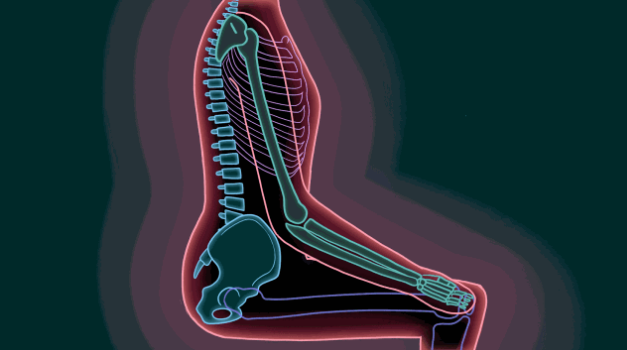
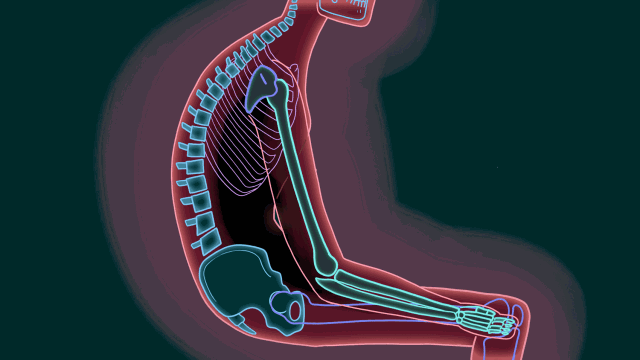
Increase the risk of cardiovascular disease
Sitting inactive for a long time, coupled with drinking less water, slows down blood circulation, over time will make the heart function decline and cause cardinal atrophy.
Induce intestinal disease
Sitting for long periods of time weakens the peristalsis of the intestine and stomach, and harmful components tend to stay in the colon, stimulating the intestinal mucosa. In addition, the blood circulation in the abdominal cavity, pelvis, and lumbosacral region is not smooth, and the intestinal immune barrier function decreases, which increases the risk of colon cancer.
Islet function is affected
A study published in the American Journal of Preventive Medicine showed that women who sit for more than 7 hours a day have a higher risk of developing type 2 diabetes.
Not only that, if you have diabetes, the longer the patient sits and the faster the weight gain, the greater the impact on islet function.
Degenerative disc herniation
Sitting in a bad posture for a long time, with the lower back hanging in the air, and the lumbar spine in an angled state, the gravity on the intervertebral disc is continuously increased, which induces degeneration and herniation of the Intervertebral disc.
Knee pain
Sitting for a long time will cause severe pressure on the waist, and the nerves in the waist will extend to the knee, which will cause knee pain.
In addition, people who sit and work for a long time keep their legs bent for a long time and blood vessels are compressed, which makes the temperature at the knees lower and is prone to patella softening.
Practice 4 more moves against sedentary
Sports experts recommend 4 sets of stretching exercises for sedentary people. It is recommended that you practice several times in your leisure time. Each movement only takes 30 seconds to help you soothe your stiff body and relax your mind and body.
01 Kneeling turn
Kneel on the ground with your left knee, place your right leg about 30 cm in front of you, make your knees at a 90° angle, extend your right arm upwards, and hang your left hand naturally, keeping your upper body straight.
Try to twist your body backwards as much as possible, and at the same time put your right hand down and point to the toes until you feel a stretch on your left hip. Hold for 30 seconds; change your left leg in front and kneel down on your right knee.
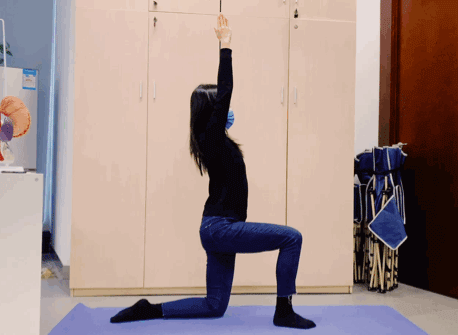
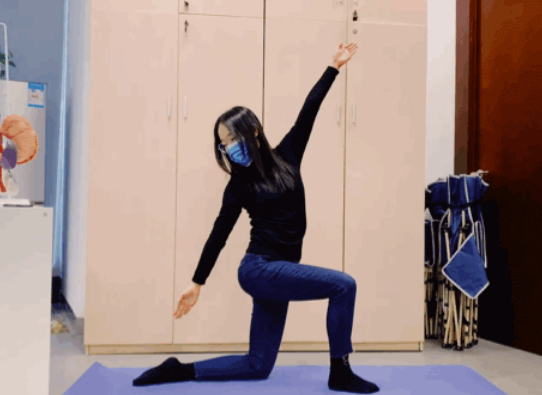
02 Kneel and raise your leg
The right leg is in front and the left leg is behind, in a kneeling lunge position (a cushion can be placed under the left knee), the upper body is straight, and the right knee is held with both hands.
Lift the left leg up, with the toes against the wall, and the toes as far up as possible. Move the body’s center of gravity forward until you feel a full stretch on the front side of the left thigh. Hold for 30 seconds; change to the other side to stretch.
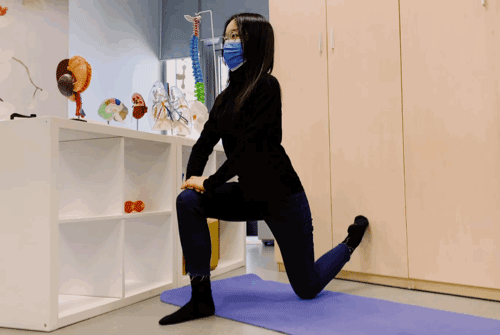
03Push the wall and pull the calf
Stand about 60 cm away from the wall, with your right leg bend your knee forward, your left leg straight behind, your arms straight, and your hands against the wall.
Push the wall hard and place your weight on your left leg for 30 seconds. After changing the right leg, stretch the left and right legs 3 times, and do at most 3 sets a day.
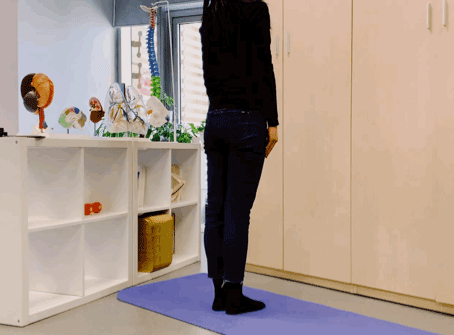
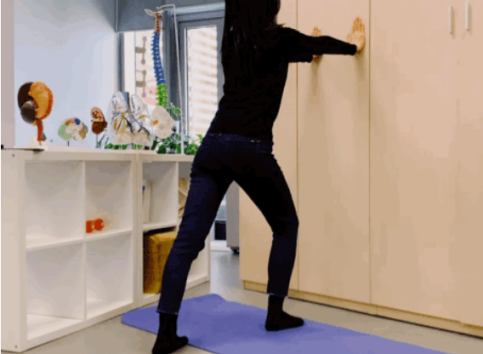
04 Grab the door and expand the chest
Bend your right arm 90° to grasp the door frame or corner of the wall, your elbows are flush with your shoulders, your right leg bends your knees forward, and your left leg is straightened back; your left shoulder is twisted back as far as possible until you feel a stretch in your chest and right shoulder 30 seconds.
Change the left arm to grab the door frame and do the same action, 3 times on each side.


Comments